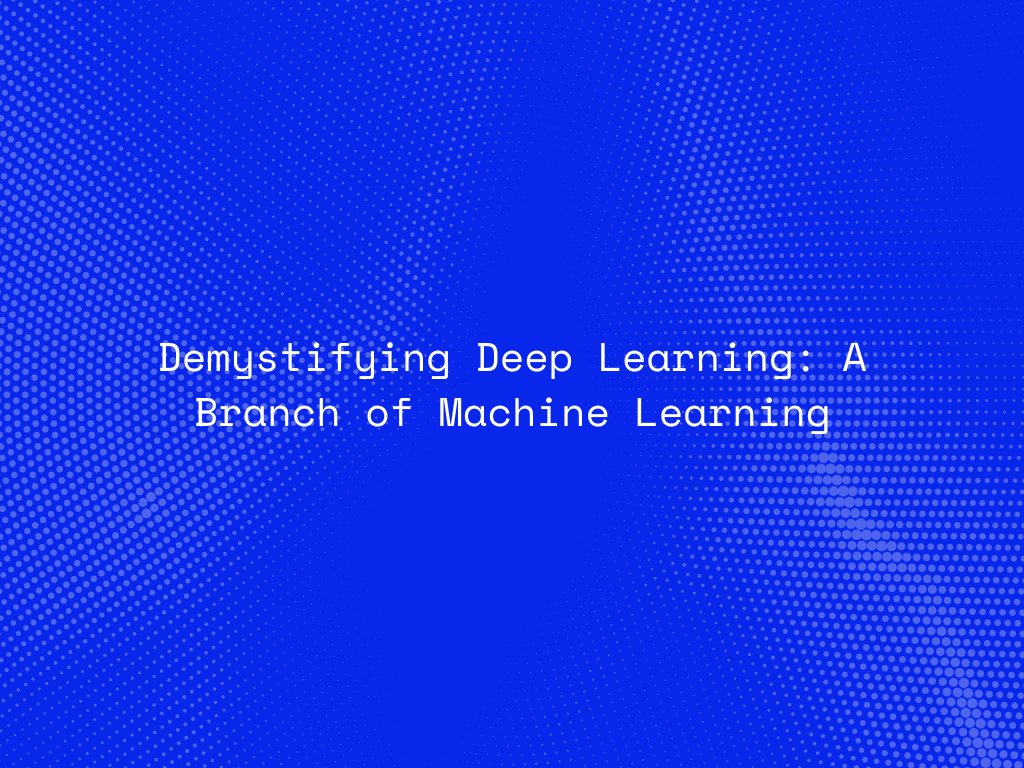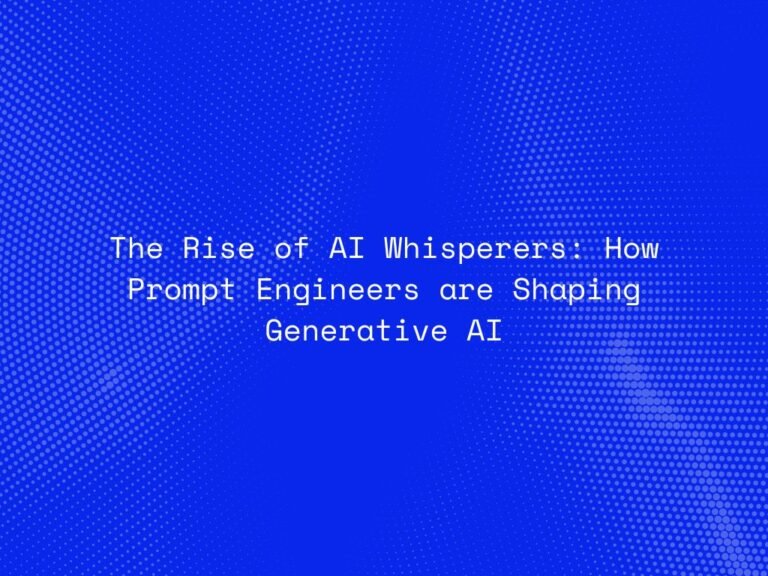Deep learning, a subset of machine learning, has gained immense popularity for its ability to process and analyze vast amounts of data, uncover patterns, and make predictions. It powers various applications we encounter daily, from voice assistants to recommendation systems. This blog aims to demystify deep learning, explaining what it is, how it works, and its impact on different industries.
What is Deep Learning?
Deep learning is a branch of machine learning that uses artificial neural networks with multiple layers to model and understand complex patterns in data. Inspired by the human brain’s structure and function, these networks, known as deep neural networks, are capable of learning from data representations at multiple levels of abstraction.
How Deep Learning Works
Artificial Neural Networks
At the core of deep learning are artificial neural networks, which consist of interconnected nodes or “neurons.” These networks are typically organized into layers:
- Input Layer: Receives raw data.
- Hidden Layers: Intermediate layers where data is transformed through weighted connections.
- Output Layer: Produces the final prediction or classification.
Training Deep Neural Networks
Deep learning models are trained using large datasets. The training process involves the following steps:
- Forward Propagation: Input data passes through the network, and initial predictions are made.
- Loss Calculation: The difference between the predicted and actual values is calculated using a loss function.
- Backward Propagation: The model adjusts the weights of the connections to minimize the loss, effectively “learning” from the errors.
- Optimization: An optimization algorithm, such as stochastic gradient descent, is used to update the weights iteratively until the model converges to an optimal solution.
Activation Functions
Activation functions introduce non-linearity into the neural network, enabling it to learn complex patterns. Common activation functions include ReLU (Rectified Linear Unit), sigmoid, and tanh.
Regularization Techniques
To prevent overfitting, where the model performs well on training data but poorly on unseen data, regularization techniques such as dropout, L2 regularization, and data augmentation are used.
Connect With Us
Key Applications of Deep Learning
Computer Vision
Deep learning excels in computer vision tasks, such as image recognition, object detection, and facial recognition. Convolutional Neural Networks (CNNs) are widely used for processing visual data.
Natural Language Processing (NLP)
Deep learning powers NLP applications like language translation, sentiment analysis, and chatbots. Recurrent Neural Networks (RNNs) and Transformer models like BERT and GPT are popular in this domain.
Speech Recognition
Deep learning models are used for speech-to-text conversion, voice assistants, and speaker identification. These applications rely on models that can process and understand audio signals.
Healthcare
In healthcare, deep learning aids in disease diagnosis, medical imaging analysis, and drug discovery. Models trained on medical data can identify patterns and anomalies that assist healthcare professionals.
Autonomous Vehicles
Deep learning enables autonomous vehicles to perceive their environment, make decisions, and navigate safely. Models process data from sensors and cameras to detect objects, pedestrians, and road conditions.
Finance
In finance, deep learning is used for fraud detection, algorithmic trading, and credit scoring. Models analyze transaction data and market trends to make predictions and identify suspicious activities.
Challenges in Deep Learning
Data Requirements
Deep learning models require large amounts of labeled data for training. Acquiring and labeling this data can be resource-intensive and time-consuming.
Computational Resources
Training deep learning models demands significant computational power, often necessitating specialized hardware like Graphics Processing Units (GPUs) or Tensor Processing Units (TPUs).
Interpretability
Deep learning models, especially deep neural networks, are often considered “black boxes” due to their complexity. Understanding how these models make decisions is challenging, impacting their transparency and trustworthiness.
Overfitting
Deep learning models are prone to overfitting, where they perform well on training data but fail to generalize to new data. Regularization techniques and cross-validation are used to mitigate this issue.
Ethical Considerations
The use of deep learning raises ethical concerns related to bias, privacy, and accountability. Ensuring fair and unbiased models while protecting user data is crucial.
Connect With Us
The Future of Deep Learning
Advancements in Architectures
Ongoing research is leading to the development of more efficient and powerful neural network architectures. Innovations like GANs (Generative Adversarial Networks) and Capsule Networks are expanding the capabilities of deep learning.
Integration with Other Technologies
Deep learning will increasingly integrate with other emerging technologies, such as the Internet of Things (IoT) and edge computing, enabling real-time data processing and decision-making.
Ethical AI Development
There will be a growing emphasis on developing ethical and transparent deep learning models. Efforts to reduce bias, improve interpretability, and ensure data privacy will be prioritized.
Wider Adoption Across Industries
As deep learning technology matures, its adoption will spread across various industries, driving innovation and transforming business processes. Sectors like agriculture, energy, and education will benefit from deep learning applications.
Conclusion
Deep learning is a powerful branch of machine learning that continues to drive advancements across numerous fields. By understanding its fundamentals, applications, and challenges, we can appreciate its transformative potential and address the complexities it presents. As research and technology evolve, deep learning will play an increasingly vital role in shaping the future of AI and driving innovation across industries.
What are your thoughts on deep learning? Share your comments and join the conversation below!




